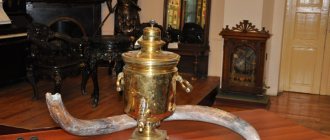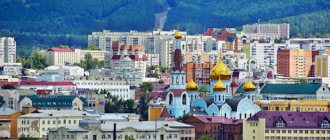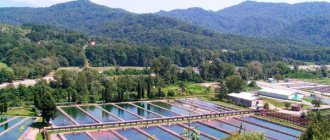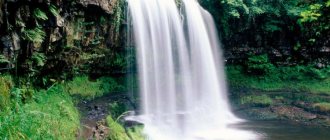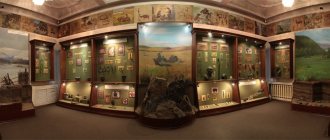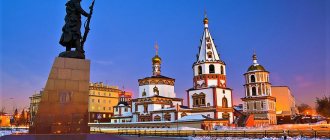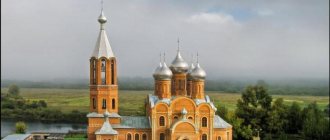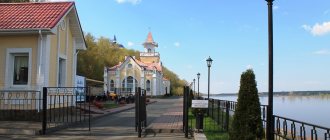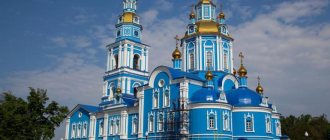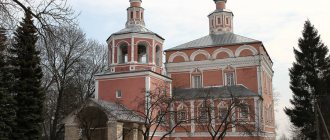The sights of Chita attract tourists from all over the country to the city. The Transbaikal region is known for its unique natural beauty, and its capital, Chita, is famous for its architectural monuments, museums, theaters and other cultural sites. When the city was just beginning to form, it was called a settlement without a population. At that time, the sights of the Trans-Baikal Territory were not known to Russians, and some of them had not yet appeared.
The exile of the Decembrists played an important role in the development of the city. Each Decembrist who came to Chita made some contribution to the cultural formation of the capital. Due to the small number of residents, there was an acute shortage of personnel in law enforcement agencies and the military sector. Later, the exiled revolutionaries began to build the Trans-Siberian Railway, which provided a connection between the remote town and the central part of Russia.
What is Chita famous for? Unique geographical location. Its remoteness made it possible not to participate in the destructive events that took place in Russia. This helped preserve many architectural monuments and historically significant places. A striking example is the building of the main post office, which is more than one hundred and thirty years old. The church in which the Decembrists took refuge was built in the eighteenth century.
Chita - attractions and interesting places to see in Chita
The sights of Chita, photos with names and descriptions of which are available on the Internet, are unique places that can take city guests back several centuries. Here, modern design and innovative projects are closely intertwined with the historical beauty of buildings and parks. The main attractions of the Trans-Baikal Territory, photos with descriptions:
- Lenin Square. The famous landmark appeared relatively recently - in the nineteenth century. At first it was Sophia Square, later – Novosobornaya. They began to put it in order when the cathedral was completed - in 1938. Asphalt was laid on the territory and several beautiful alleys were created. Later, a monument to Lenin appeared here, which became the reason for changing the name of the square. Today the Chita City Hall building is an architectural monument, a former apartment building.
- Regional History Museum of Transbaikalia. The sights of Chita, photos with names of which tourists often study before traveling to the city, are not limited to natural and architectural monuments. For example, in the local history museum you can get acquainted with exclusive exhibits. There are more than 190,000 of them here. The museum was founded in 1895, now it is the largest complex, rich in unique artifacts, exhibitions and historical values. The museum has several installations that completely imitate the life of the indigenous population, Decembrist documents, archaeological finds and local masterpieces of art. The house in which the museum is located is recognized as an architectural monument.
- Temple of the Decembrists. Heading the interesting places in Chita is the Church of the Decembrists, which is a real museum. This Staro-Chita St. Michael the Archangel Cathedral is a real repository of the most valuable artifacts. There are thousands of unique items on display here. The temple is considered a monument to wooden Russian architecture; it was built in the eighteenth century. Decembrists sent into exile came to church to get married, here they prayed for their relatives and buried loved ones. Some sights of Chita and the Trans-Baikal Territory are associated with tragic events, but they remind us of the difficult history of the country. Today the temple is not open, but the museum opened its doors to guests in 1985.
Photos of Chita
Chita: Photos Weather Map Flights Hotels
Countries of the worldRussiaCitiesChita
This collection contains 33 photographs of Chita, its views, houses and attractions, which were taken by local residents, tourists and photographers. All photos of Russian cities and attractions are presented in high quality, we hope that this will help you get to know them better.
VKontakte facebook twitter
Photos of other Russian cities Photos of Moscow Photos of St. Petersburg Photos of Sochi Photos of Tula Photos of Yaroslavl Photos of Vladimir Photos of Voronezh Photos of Yekaterinburg Photos of Ryazan Photos of Tver Photos of Sevastopol Photos of Dmitrov Photos of Rostov the Great Photos of Ivanovo Photos of Orel Photos of Nakhodka Photos of Belgorod Photos of Bryansk Photos of Volgograd Photos of Kazan Photos of Kaluga Photos Krasnodar Photo Lipetsk Photo Nizhny Novgorod Photo Penza Photo Samara Photo Saratov Photo Smolensk Photo Tambov Photo Chelyabinsk Photo Anapa Photo Kolomna Photo Yuzhno-Sakhalinsk Photo Vladivostok Photo Grozny Photo Izhevsk Photo Kostroma Photo Kursk Photo Omsk Photo Perm Photo Rostov-on-Don Photo Ufa Photo Cheboksary Photo Chita Photo Kerch Photo Pushkin Photo Sergiev Posad Photo Murom Photo Yeisk Photo Abakan Photo Saransk Photo Dolgoprudny Photo Balashikha Photo Irkutsk Photo Kirov Photo Novosibirsk Photo Orenburg Photo Podolsk Photo Ulyanovsk Photo Essentuki Photo Magadan Photo Alushta Photo Mytishchi Photo Krasnoyarsk Photo Togliatti Photo Khabarovsk Photo Myshkin Photo Kaliningrad Photo Rybinsk Photo Stavropol Photo Suzdal Photo Tomsk Photo Tyumen Photo Pyatigorsk Photo Ukhta Photo Astrakhan Photo Blagoveshchensk Photo Murmansk Photo Novorossiysk Photo Pskov Photo Ulan-Ude Photo Gelendzhik Photo Uglich Photo Pitkyaranta Photo Arkhangelsk Photo Barnaul Photo Vologda Photo Yoshkar-Ola Photo Kemerovo Photo Kurgan Photo Magnitogorsk Photo Nalchik Photo Surgut Photo Taganrog Photo Yakutsk Photo Simferopol Photo Balakovo Photo Svetlogorsk Photo Ordzhonikidze Photo Zheleznovodsk Photo Engels Photo Komsomolsk-on-Amur Photo Armavir Photo Vladikavkaz Photo Makhachkala Photo Norilsk Photo Tuapse Photo Yalta Photo Torzhok Photo Ples Photo Alexandrov Photo Volgodonsk Photo Angarsk Photo Bratsk Photo Naberezhnye Chelny Photo Novokuznetsk Photo Syzran Photo Cherepovets Photo Sudak Photo Veliky Novgorod Photo Kislovodsk Photo Kalyazin Photo Mineralnye Vody Photo Kovrov Photo Belokurikha Photo Pereslavl-Zalessky Photo Sortavala Photo Derbent Photo Petrozavodsk Photo Syktyvkar Photo Feodosia Photo Novocherkassk Photo Vyborg Photo Kozelsk Photo Elista Photo Balaklava Photo Foros Photo Nizhnevartovsk Photo Petropavlovsk-Kamchatsky Photo Pechora Photo Salekhard Photo Tobolsk Photo Valdai Photo Yuryev-Polsky Photo Nizhny Tagil Photo Severodvinsk Photo Anadyr Photo Zadonsk Photo Khanty-Mansiysk Photo Priozersk Photo Vorkuta Photo Temryuk Photo Dzerzhinsk Photo Gatchina Photo Kronstadt Photo Yelabuga Photo Veliky Ustyug Photo Maykop Photo Staraya Russa Photo Miass Photo Khasavyurt Photo Shlisselburg Photo Alupka Photo Bakhchisarai Photo Peterhof Photo Palekh Photo Velikiye Luki Photo Baltiysk Photo Igarka Photo Nevyansk Photo Nerekhta Photo Kidekshi Photo Verkhoturye Photo Shchelkino Photo Dalmatovo Photo Ostashkov Photo Chernyakhovsk Photo Gorokhovets Photo Ussuriysk Photo Sterlitam aka Photo of Zelenogradsk Photo of Neman Photo of Sovetsk Photo of Polessk Photo of Severomorsk Photo of Roslavl
Chita
Description Photos Weather Map Flights Hotels
See also: Photos of Korea, Cities of Georgia, North Korea (DPRK), Turin, Varna, Hobbiton, Pskov-Pechersky Monastery
What to see in Chita - attractions, historical buildings of Chita
The sights of Chita are often associated with historical buildings. The amazing architecture features a drama theatre, many temples and other objects built more than a century ago. What is the city of Chita famous for:
- Kazan Cathedral Church. Relatively new building, erected in 2001. Previously, there was an old stadium on the site of the church. The building is decorated in the Vladimir-Suzdal style. The cathedral stands out visually due to the non-standard color scheme chosen for decoration. The weight of the main bell is almost ten tons. There are thirteen bells in total. This is the largest cathedral in the Far East.
- Main Post Office Many beautiful places in Chita have a long history. The building in which the Main Post Office is located to this day was built in 1893. Initially, there was only a postal and telephone office here. Later, savings banks appeared. Twelve months after the opening of the building, a consumer union settled here. The next object was the library. It was the Main Post Office that became the first starting point of the telephone cable.
- Titovskaya Sopka. Everyone knows what Chita is famous for. These are unique mountain ranges with stunning nature. The hill is part of a mountain system that was once considered a volcano up to 450 meters high. Archaeological excavations have been carried out here for a long time; scientists managed to find important paleontological elements: mammoth tusks, several burials made in the Bronze Age, petroglyphs and much more. Previously, there was a cross on Titovskaya Sopka, but in 2002 a chapel was erected in its place.
- Chapel of Alexander Nevsky. The consecration of the chapel took place in 2001, in the fall. The building was located on Titovskaya Sopka, it was built quite quickly - over the course of two and a half months. Work began at the beginning of June, and the consecration of the dome cross took place at the end of August.
- Chita datsan. For a long time Chita could be proud of a Buddhist temple of incredible beauty, but the revolution destroyed this excellent structure. Reconstruction began at the end of 2002, and the completely restored building was consecrated in 2010. Today, services are regularly held here and holidays are celebrated. Datsan has the most modern equipment in comparison with all the temples in Chita. To support the environmental protection program, materials obtained by recycling plastic containers were used in construction.
Chita - attractions and interesting places with photos, Shumovsky Palace, Chita
We list the beautiful places in the city where you can not only admire nature, but also take amazing photographs:
- Botanical Garden of Transbaikalia. The facility opened in 1990 with the goal of educating residents of the city and country. The work of the botanical garden also helps to expand the number of plant varieties. Experts conduct a lot of research here, identifying non-standard vegetation. They are trying to develop the most adaptive conditions for new representatives of the flora. Tourists can go on a themed tour to learn as much as possible about the work of the garden.
- Zazovsky estate. Merchant Solomon and Zusya built the famous estate in the twentieth century. It became the most expensive in the entire city. Some of the premises were rented by tenants. The Samson restaurant, the Siberian Bank, and later the main grocery store were located here. The managers of the main Singer store moved to the estate in 1917. This unique building, made in a consistent style, made an impression on the townspeople walking by.
- FSB building, Chita. Previously, it was the famous Shumovsky Palace, which is still considered an architectural monument of the city. It was built at the beginning of the twentieth century. The external facade is decorated with stucco, the filigree work of the architects is visible in every element. The building received the Grand Prix award in the French capital in 1911. The Eiffel Tower received a similar award.
Monument to Love and Fidelity in Chita. The opening date of the famous monument is 2011. The project was created by the famous architect Grigoryan. The monument was built on the place where the wives of the Decembrists lived; they went to fetch their loved ones who were awaiting exile. The sculpture of a young couple symbolizes sincerity, openness, and sensuality.
LiveInternetLiveInternet
House of Lukin Chita, st. Babushkina, 82
Monument of architecture and urban planning of local significance (Decision of the Small Council of the Chit. Region Council of People's Deputies No. 47 dated March 4, 1993). Built in 1905 by the merchant of the 2nd guild M.T. Lukin according to the design of the architect Fyodor Evlovich Ponomarev.
The original example of a city residential building is made in the style of romantic tower architecture. House-Teremok is located on the red line of the street among brick multi-storey buildings. The wooden L-shaped building consists of 1- and 2-story volumes. The two-story volume is crowned with a 4-sided tent with a spire. In the middle part of the house on the street side there is a loggia with a carved openwork arched fence on 4 posts.
In the early 1980s, the Chitagrazhdanproekt organization under the leadership of N.N. Buntovsky developed a project for the restoration of the building. The lost elements of the porch, the external wooden staircase, the lost decor of the window casings, the open gallery, and drainage funnels were restored.
All facades of the building have an asymmetrical composition and are richly decorated with sawn carvings (window casings, frieze, cornice, corner pilasters.
The decor, made using the saw-cut technique, is an ornamentation of geometric and zoomorphic figures.
The contrast of the carved decor and the open log wall of the log houses creates a unique flavor of wooden architecture.
Chita City Hall building. Former mansion of the merchant Polutov
Built at the beginning of the 20th century according to the design of the architect Ponomarev Fedor Evplovich. The corner part of the house has been cut off. This architectural detail is characteristic of many Ponomarevsky buildings. The main buildings of Ponomarev in Chita are the apartment houses of Starnovsky, Polutov, Duhai, Okulov, Zazovsky, Korotkov, Drevnovsky. Under his leadership, a mosque, the State Bank, the treasury building, a women's gymnasium for 500 students, the Trufanov Bank, etc. were built.
It is these buildings that define the appearance of the old merchant Chita. It is a pity that not a single street in the city bears the name of the chief architect, who worked in Chita from 1903 to 1921.
Starnovsky House
Chita, st. Tchaikovsky, 24 – Zhuravleva, 30
The Starnovsky House is a monument of architecture and urban planning of local importance. Built in 1906–07 in Art Nouveau style.
The author of the project is Ponomarev Fedor Evplovich. In 1911, the building housed the District Court on the 2nd floor. The sloping corner of the 2-story corner building is topped by a dome with a spire over a slightly projecting bay window on the 2nd floor. The courtyard facades have a complex configuration in plan.
On the facades, the windows of the 2nd floor are highlighted with U-shaped sandals. The facades are divided vertically by pilasters. The staircase blocks on the facades are highlighted by balconies with wrought iron railings. The windows located on both sides of the balconies have curved outlines (a detail of the Art Nouveau style, which does not tolerate monotony).
At the roof level, the facades are decorated with brick pillars and parapet walls with oval openings. This is another detail characteristic of many buildings built according to Ponomarev’s designs. The under-eaves of the facades, pilasters, and roof columns are decorated with round stucco elements.
House of the Shumov merchants
Chita, st. Lenina, 84
The Shumov Palace was built according to a design that received the Grand Prix at the World Exhibition in Paris in 1912. It was designed in an eclectic style with elements of Baroque and late classicism.
Gold merchants, owners of a million-dollar fortune, the Shumov brothers, decided to build a building in the city center, part of which they planned to rent out for the Public Assembly, and the second part to use as housing for their family.
The design of the building was carried out by Georgy Stepanovich Mosashvili, a drawing teacher at the Chita Land Survey School, an architect and sculptor. He embodied all the wishes of the Shumovs: the palace had to testify to the wealth of the owners, so it was built with special chic and scope with a combination of two architectural styles - the splendor of Baroque and the monumentality of classicism. The construction was supervised by the architect F.E. from 1912. Ponomarev. By 1914, part of the building (now existing) was completed; construction of the 2nd stage was not undertaken.
The symmetrical main façade is reinforced by 4 risalits, 2 central ones end with 4-sided domes, and the side ones with low parapets. The top floor of the house is especially rich in decor.
The outer risalits and the middle part are decorated with an order. Single columns are located between the windows, paired ones - along the edges of the projections and in the center of the facade.
On the façade of the building there is a huge amount of decoration: cornices, stucco molding with floral motifs, several openwork balconies, pilasters encircling the third floor, mascarons, horizontal interfloor rods with stucco molding in the form of tassels and pendants.
The beveled corner of the building is fixed by a cylindrical bay window on massive twisted brackets, which are decorated with stucco. Decorative details are made using cement casting technique, which is unconventional for Chita.
The historical interiors are in good condition: on the landings and in the lobby there are floors made of ceramic tiles with ornaments, stairs with stone steps and wrought iron railings. The interior spaces (flights of stairs, ceilings and walls on landings, corridors, offices), the arch in the lobby are richly decorated with stucco. In the interiors, 2 lamps from the Ural and Venetian masters have been preserved. After construction was completed, the premises were rented out. In 1915, Austrian prisoners of war were kept in the palace basement. In March 1918, a meeting of the Congress of Workers' Councils was held.
Under Ataman G.M. Semenov, the hospital office was located in the palace, and concerts were held. In March 1920, the office of the Japanese consul Ogata operated; in September 1920, the government of the Far Eastern Republic was located. Since 1923 - Transbaikal Provincial Council of Trade Unions, the house began to be called the Palace of Labor. A public library was organized in 1922, and a radio circle operated in 1925.
In the summer of 1937, the building was transferred to the department of the Trans-Baikal Military District, later it housed the NKVD of the Chita region, the MGB, the KGB, the Inter-Republican Security Service, the Federal Counterintelligence Service, and the FSB.
Lit.: Lobanov V.G. Old Chita. Chita, 2001.
Photo restored on 11.08. 2021
Series of messages "Chita":
Chita
Part 1 - Architectural Chita 1 Part 2 - CHITA and its surroundings. Part 1 Part 3 - CHITA and the surrounding area. Part 2 ... Part 22 - Transbaikalia said goodbye to the film festival. Until spring 2021... Part 23 - The city of Chita from a bird's eye view Part 24 - Memories of Chita - the sunny capital of Transbaikalia
Modern Post Series:
Modern
Part 1 - Architectural Chita 1 Part 2 - Masterpieces of architecture by Antonio Gaudi Part 3 - Art Nouveau style in the interior Part 4 - Antonio Gaudi. Casa Batllo, Barcelona, Spain Part 5 - Moscow Art Nouveau - the main style of architecture of the era at the turn of the 19th-20th centuries
